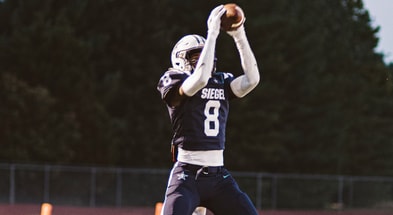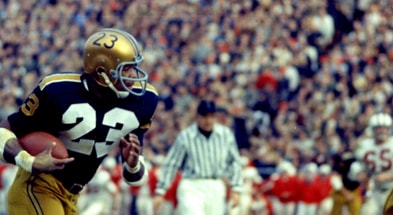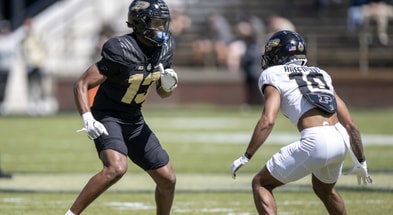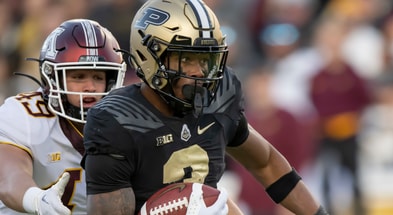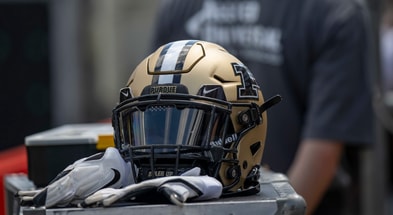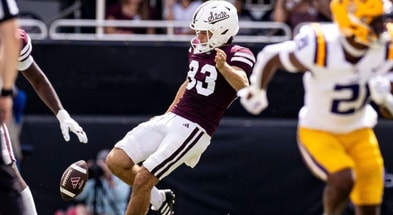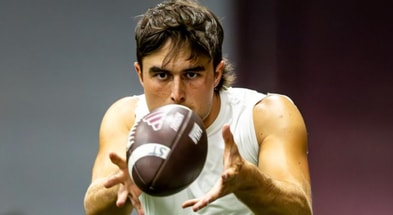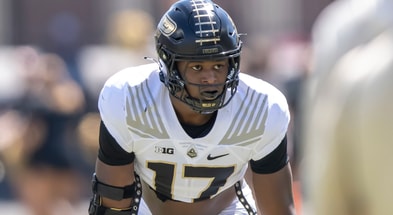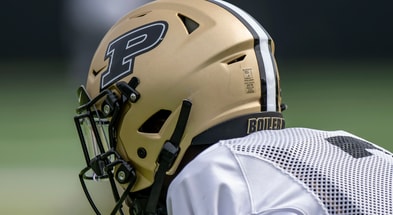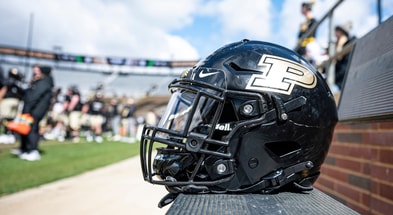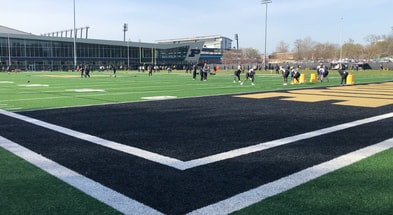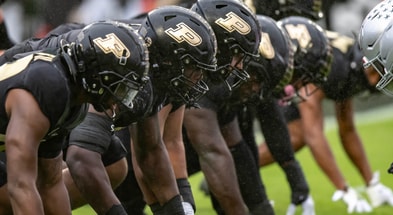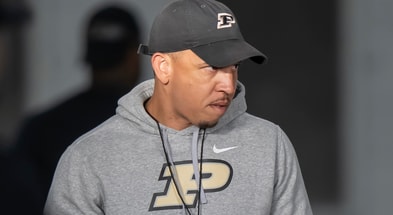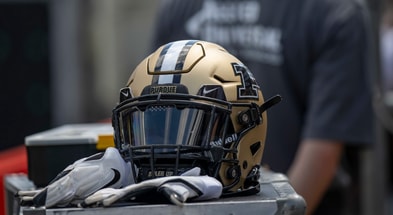100 Years of Purdue football in Ross-Ade: 1964-73
As we celebrate the 100th season of Purdue football at Ross-Ade Stadium, we will take a decade-by-decade look at the history of this almost century-old facility.

Seating renovations continue increase capacity to near 70,000
As the popularity of college football continues to burgeon in the 1960s so did stadium capacities. Once again Ross-Ade Stadium was no different, though technically during this 10-year span, capacity was slightly decreased. Here are three major event that happened during the fifth decade of Ross-Ade:
1964 – The playing field is lowered by seven feet and 13 rows of seats are added. The new seating capacity is 60,000, which is in increase of about 5,000. Sloping, semicircular sidewalks are built to connect the locker rooms to the playing field, and a walkway is provided at the base of the seating area.
1969 – The last of the temporary bleachers at the top of the original seating area in the north end are replaced with permanent seating, bringing the capacity to 68,000. A new scoreboard is built south of the playing field. An additional level is added to the press box.
1970 – Larger bleachers south of the playing field are installed, adding 1,200 seats. The inclusion of handicapped-accessible seating and other changes reduced capacity to 67,332.
Ross-Ade’s signature moment(s): 1964-73
There were many great moments. The pinnacle of Purdue football in the modern era, if winning percentage is the measure, occurred during this decade. Attendance skyrocketed too, averaging 59,879 for the period, with Ross-Ade being filled to the brim for much of the decade, especially from 1965-70.
The signature moments were twofold: Purdue’s three-straight home victories over Notre Dame in 1965, 1967, 1969 were hard to top, as was the coronation of sorts of the Rose Bowl-bound Boilermakers in a 51-6 win over Indiana in 1966.
Purdue’s Ross-Ade Stadium W-L Record: 1964-73
The Boilermakers’ 38-12 record from 1964-73 is the second-best decade (only behind the 34-4-2 mark from 1924-33), but Purdue had a span of 27 wins in 28 home games from 1966-69.
Purdue best player in Ross-Ade: 1964-73
Bob Griese, Leroy Keyes Mike Phipps.Otis Armstrong, take your pick. Each was a consensus All-American during this stretch, the most productive decade by that measure in Boilermaker annals. Griese (second, 1966), Keyes (third, 1967; second 1968) and Phipps (second 1969) all had podium finishes for the Heisman Trophy, something that no school had accomplished in four consecutive years by three players before. (Note: SMU’s Doak Walker and Kyle Rote were top three finishers from 1947-50; Oklahoma’s Baker Mayfield, Kyler Murray and Jalen Hurts all were podium finishers 2016-2019).
The best individual opponent(s) to play in Ross-Ade: 1964-73
Only six Heisman Trophy winners have played in Ross-Ade Stadium in the year that they won the trophy, but none during this period. Dick Butkus, the Illinois linebacker and NFL Hall-of-Famer, appeared in 1964, and Stanford’s Jim Plunkett in 1969 losing to Phipps in one of the great games in Stadium history. This 36-35 affair saw the Boilermakers rally from a 14-point fourth-quarter deficit and saw the two quarterbacks combine for nearly 800 yards in passing, something unheard of in those days. Purdue beat Plunkett and No. 3 Stanford in Palo Alto a year later, yet Plunkett won the 1970 Heisman.
Ohio State Hall of Fame defensive back Jack Tatum faced a Purdue team with a talented sophomore wingback in Darryl Stingley in the first nationally televised game in Ross-Ade Stadium in 1970. Tragically, Tatum’s tackle eight years later put Stingley in a wheelchair for the rest of his life.
Related: Ross-Ade Stadium Decade 1; 1924-33 | Ross-Ade Stadium Decade 2; 1934-43 | Ross-Ade Stadium Decade 3; 1944-53 | Ross-Ade Stadium; 1954-63
Note: Author Tom Schott’s 2008 book “Purdue University Football Vault: The History of the Boilermakers” is a valued source throughout this piece.
